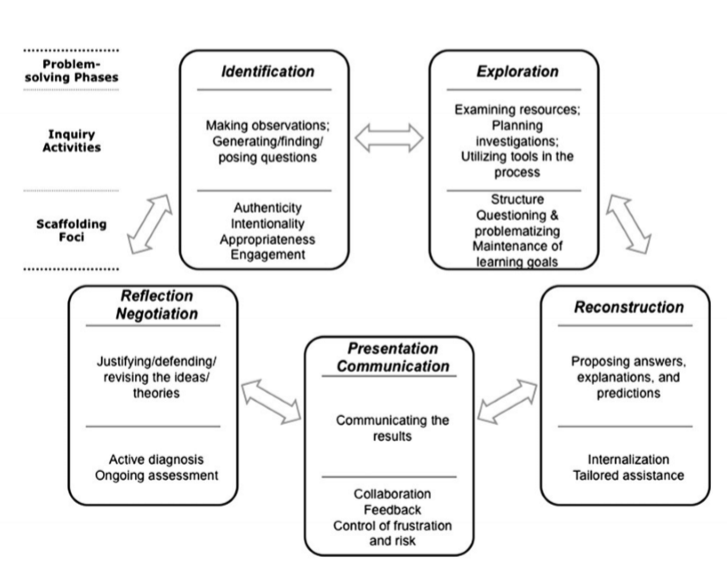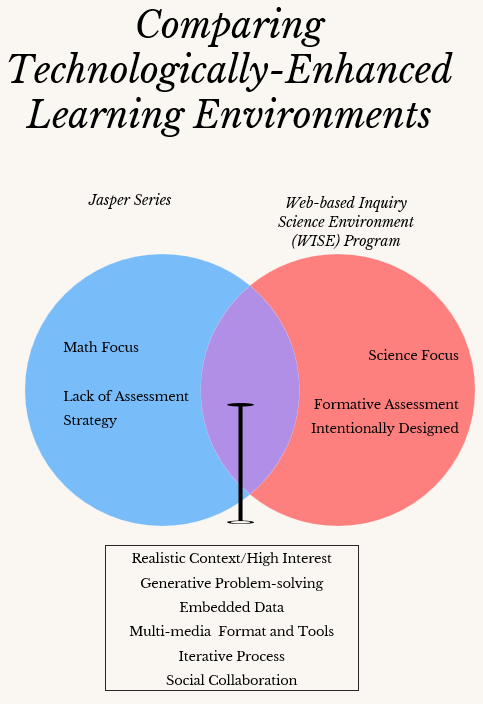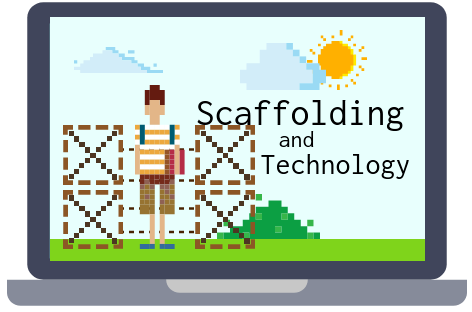Setting a Background to Customizing Anchored Instruction
The WISE (Web-based Inquiry Science Environment) Program
What was the motivation to create WISE?
WISE provided a means to support teachers in creating engaging, inquiry-based science learning environments that could be customized to meet local needs. The project goal was to provide a bridge between educational research and classroom practices. (Kim & Hannafin, 2011).
The Scaffolded Knowledge Integration (SKI) Framework
In what ways does SKI promote knowledge integration through its technological and curriculum design? Describe a typical process for developing a WISE project.
The SKI framework aims to promote the integration of students’ prior knowledge and new information to help them develop a deeper and more integrated understanding of science concepts and processes. The SKI framework integrates two key constructs in its design features: problem-solving and scaffolding. The curriculum goals are inextricably linked and supported through the technological format. Each activity proceeds through five problem-solving steps: problem identification and engagement, evidence exploration, explanation reconstruction, communication and justification of explanation, and revision and reflection of explanation (Kim & Hannafin, 2011). The scientific inquiry steps proceed in a constructivist, collaborative, scaffolded context. The high-interest, interdisciplinary topics are developed with peer interaction. Individual and paired work is shared through the digital space for feedback and reflection.

Students have scaffolded support provided through either static or dynamic prompts as they proceed through the activity. The WISE activities seek to optimize cognitive and social affordances using blended interaction with peers, teachers, and technology
Comparing The WISE Program and the Jasper Woodbury Adventure Series
The Jasper Series math program and the WISE science program share some common design principles. Both programs emphasize the importance of realistic problems that encourage generative learning and problem-solving in interdisciplinary contexts. Both programs also use multi-media formats to create an engaging and immersive learning experience, although the Jasper series is solely video based and the WISE program uses different forms of technology tools. Each program provides embedded data to support problem solving and scientific thinking, and both use an iterative style to foster deeper understanding; the Jasper series revisits the context with different challenges and the WISE program revisits the five-step inquiry process in all activities. Both programs provide collaborative learning opportunities, thus encouraging students to work together to solve problems and develop social skills.

There are some noticeable differences between the two programs. The Jasper Series is not designed with formative assessment strategies to inform teaching and learning, whereas the WISE program is intentional in providing assessment opportunities, including self, peer, and teacher assessments. Although both programs allow for interdisciplinary aspects, they each have different priorities; the Jasper Series program is focused on math, while the WISE program is focused on science.
WISE Customizations for My Context
How could you use a WISE project in your school or another learning environment?
Working with adults there is a lot of experience and concern around the political, economic, and social challenges. The WISE topics that deal with relevant community topics or social justice issues would likely provide a high degree of interest and engagement and build interdisciplinary connections. If possible, it would be interesting to include one activity per term as a means of building and practicing students’ skills and understanding regarding the scientific inquiry process.
What about WISE would you customize?
Many learners in the adult upgrading program are ELL students or learners that have been away from school or struggled with school, and may lack confidence. To help build language skills and to provide lots of formative feedback, I would be sure to customize the WISE activities so that there are numerous dynamic scaffolds available. Allowing learners to have access to vocabulary lists, procedural prompts, and graphic organizers caters to diverse learner needs and helps further the development of skills, concepts, and meta-cognition. Similarly, I would customize to include lots of multi-media to complement written content. Including video, audio, images as well as text supports different learning styles and preferences and reinforces understanding. A final customization that I would regularly integrate into the WISE activities would be opportunities for self, peer, and teacher formative assessment to support self-regulation, collaboration, and individualized support.

I would provide dynamic scaffolds for learners select, such as vocabulary lists, procedural prompts, and graphic organizers to strengthen skills, concepts, and meta-cognition. Similarly, regular opportunities for formative assessment check-ins, through peer interaction or self-regulation, are helpful for students to build general learning skills.
References
Kim, M. C., & Hannafin, M. J. (2011). Scaffolding problem solving in technology-enhanced learning environments (TELEs): Bridging research and theory with practice. Computers & Education, 56(2), 403-417.
